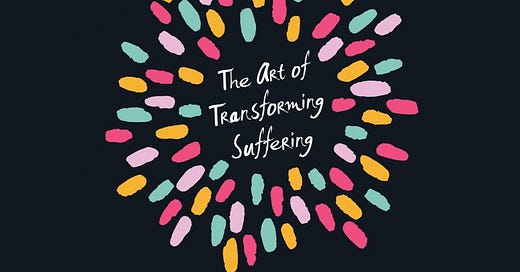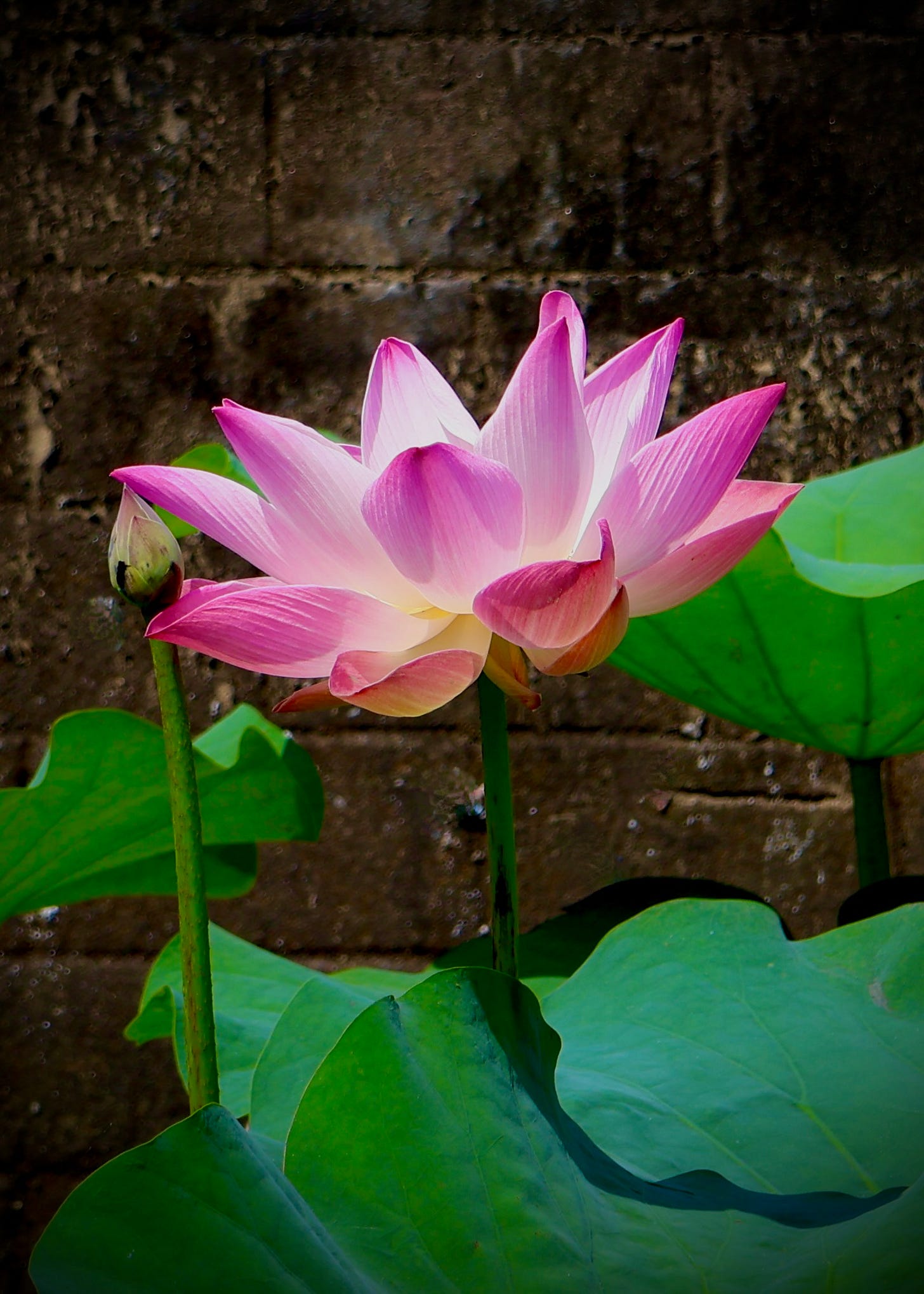Phenomenal Books Revisited: NO MUD, NO LOTUS by Thich Nhat Hanh
Spotlighting books I return to repeatedly as they contain abundant, applicable, evergreen wisdom.
If I could somehow ask friends/readers for a show of hands for those who would also rank No Mud, No Lotus high on their all-time favorite book lists, we’d see a lot of waving palms. I’d suggest there are no duds among Thich Nhat Hanh’s 100+ titles, but some stand out as centerpieces in the canon. This is one of them. And how gloriously unusual it is to read and treasure something as popular as it is transformative. I’m glad to never be in a position of answering the question “If you could have only one of Thay’s books for the rest of your life…,” but if I were, yep, this would be the one. Thich Nhat Hanh is often referred to as Thay, which means “teacher” in Vietnamese.
This book is so beloved and embedded within the broader Plum Village community that its title has achieved legendary shorthand, even catchphrase status.
“Going through that tough time was horrendous, but oh my gosh did it clarify what I want most in my life. No mud, no lotus, right?”
Not many books achieve that stature…
“Dude, gotta minute? I’m in such an insane tale-of-two-cities situation right now.”
“I think I’m just gonna order takeout and watch Drag Race. #100YearsOfSolitude”
“Allright, I’m otta here. Watership Down, MFers!”
As with others in this series, I’ll offer a brief premise summary, a few big-rock takeaways and a handful of favorite quotes. I will also offer a final “coda” thought at the end of this post as to how a recent conversation with a Sangha friend opened my eyes to one of the most important messages and elements of wisdom in No Mud, No Lotus, something I completely missed when I first read it.
The Premise
Part of the magic of this book is how the most essential message is baked into the title. No mud, no lotus. Without stinking, sticky, wet mud, the beautiful lotus flower cannot bloom. Without suffering, without the mud of life, the most beautiful parts of life — happiness, love, joy, equanimity — cannot manifest. This book delivers not just a perspective on suffering and the ability to see it in a new, helpful way, it also offers tangible, disarmingly simple methods to take care of and transform your suffering. This is not a teaching about how to change your relationship with suffering so that you can power through it with more finesse. To the contrary: it’s about changing your relationship with suffering so that you benefit from what has to teach you and, through that, greatly reduce your suffering. As Thay says so simply, beautifully within the first few pages of this book:
“If we know how to use our suffering, we can transform it and suffer much less.” [emphasis mine]
Many people misinterpret the Buddha’s First Noble Truth, mistakenly believing he said “life is suffering.” That’s not what the Buddha said. The first noble truth is that “suffering exists.” It’s part of life. For everyone. To be human is to experience suffering or ill-being to some degree. There’s no way to avoid it.
To paraphrase the Four Noble Truths, they are:
Suffering exists
There are roots, causes of suffering
Understanding those causes can allow one to ease, transform, heal suffering
Here’s how to do it (teeing-up the “Noble Eightfold Path” of how to live)
My best, most succinct summary of No Mud, No Lotus is that it provides a calming, nourishing, imminently useful guide to working through the first three Noble Truths. Thay teaches that suffering exists for everyone — you’re not alone. It can serve a purpose. Resist the urge to push it away. Try not to numb yourself to its message. Don’t obsess, but don’t tune out. When suffering arises, here are ways to handle it. Follow these steps and you’ll be well on your way to making your suffering less intense and less frequent over time. Oh, and you’ll also be happier a lot more of the time as well.
Three Inspiring Takeaways
Three notable takeaways (of many) that bring me back to this book time and again:
Suffering exists to teach you something. By embracing it skillfully/tenderly, you will learn and heal. It is natural and understandable to want to avoid suffering. Or perhaps said better: to want to avoid the painful feelings suffering precipitates. This book teaches us to do the opposite — to, with skill and patience, move closer to the feelings of suffering. To understand them on the path to healing. Our civilization’s “advances” give us unlimited ways to distract ourselves with endless entertainment and consumption choices facilitated by our ubiquitous devices. Feeling down? Just insta-doordash-netflix-bourbon yourself to sleep. Thay encourages us to resist those temptations. He shows how we can embrace our suffering and pain as a calm mother embraces her upset child. He offers an array of insights and practices that help those who feel reluctant to do this (which I would estimate is everyone) to give it a go. Importantly, Thay coaches us to avoid the other extreme: of saturating ourselves so much in our own suffering that we ruminate on it as a cow literally ruminates — consuming our suffering over and over again. To embrace and understand suffering, to use it as a tool, is an art and a practice. Best part: the practices to embrace suffering are of the same family as those designed to generate joy and happiness. So it’s not just about how to move closer to and transform pain. It’s about cultivating greater happiness. This is a centerpiece message of the book.
When our suffering feels overwhelming, it’s likely because it’s not ours alone. When we heal ourselves, we can heal past, present, and future generations. The term “generational trauma” (not a term used in this book) has hit that unfortunate level in pop-psychology where it can be easier to dismiss than to lean in. With language perfectly suited to a caring, loving Zen Master, Thay helps make the intuitive case as to how pain and suffering can and does pass down from one generation to the next. Why is this helpful? Because, as Thay says, “Part of looking deeply into our suffering is to know that it is not ours alone.” (emphasis mine) On a personal level, without going into too much detail, I have had a number of experiences that speak to the truth of this teaching, manifested when my level of suffering or upset felt greater than my individual circumstances warranted. Putting the teachings of this book into practice, reflecting on specific stories of my ancestors helped the nature and intensity of my feelings begin to make sense. In ways hard to describe, I also began to feel them ease and, said with hope, begin to heal. As Thay says, “[When we] recognize, embrace, and transform our pain…we can heal not only our own suffering and than of our ancestors, we can also avoid transmitting this suffering to our loved ones, to our children and their children.”
Learning to avoid and remove “second arrows.” The “second arrow syndrome” (as I like call it) plays a key supporting role in this book. The term comes from a teaching of the Buddha in which he says that experiencing some kind of painful event or traumatic experience is like being hit with an arrow. It really hurts. But the “second arrow,” Buddha teaches, is the one we, ourselves, shoot into the exact same spot as the first arrow, and it hurts 10x as much. The second arrow is all of the anger, judgements, second guessing, guilt, and could-have/should-have statements that come rushing in and compound the pain of the original wound thanks to our own uncontrolled mind. The minor car accident is the first arrow; the weeks of boiling rage at the other driver or repeatedly asking yourself why on earth you just had to go to the grocery store at that time of day anyway…those are the second arrows. In No Mud, No Lotus, Thay gives us the mindset and tools to resist the urge to fire second arrows at ourselves. Making even a tiny bit of progress in this realm eases suffering immensely. As a former Master Bowman in the Second Arrow Archery Command, I can attest to this personally.
Favorite Quotes
“Knowing how to suffer well is essential to realizing true happiness.”
“When we’re able to embrace our suffering, we’re also embracing our ancestors, and the healing goes back through the generations.”
“Mindfulness is an energy you can generate all day long through your practice. You are a real artist. You know how to create joy and happiness any time you want.”
A gatha, or short poem, to be thought of in the morning the moment one wakes up, with each sentence deliberately aligned with an in-breath or out-breath: “Waking up this morning I smile. Twenty-four brand new hours are before me. I vow to live each moment deeply. And learn to look at all beings with eyes of compassion.”
Lastly, my promised coda. When I was in Vietnam earlier this year, taking part in the Loving Work Foundation retreats, a friend and I were talking over coffee one morning. Within the context of a wide-ranging conversation, I mentioned a recurring challenge I was wrestling with — some bit of suffering that seemed to persist despite all of my spiritual practices and understandings that I felt, by now, should have solved the thing. As is habit, I lobbed in some version of this book’s title as shorthand, something along the lines of, “I mean, I dealt with the mud and I got the lotus. Why on earth is this still bugging me?”
After a brief pause, she said, “You know, the lotus appearing didn’t mean the mud went away, right?” Whatever pause she took before saying this, I responded with one many seconds longer, unblinking. “Please say that again slowly,” I asked. She repeated it, and I’ll put it in “pull quote” format below so it gets the multiple readings and sinking-in that it deserves:
“The appearance of the lotus doesn’t mean the mud magically goes away.”
OMG. I 1000% thought it did mean that. I’d read the book several times before this conversation. I thought I knew it cold. And I had the firm impression that when the lotus appears that means “game over you won problem solved yay.” I didn’t consider that the mud remains. It never dawned on me. But of course it does — in nature as in metaphor. Hopefully a bit less than before, but it’s still there.
In this book, Thay teaches how happiness is impermanent and needs continual feeding and care. He speaks to the need of continual practice. He even references the Buddha — the enlightened one, the one who is awake! — and how he needed continual practice as well.
It was in there, but I missed it. And thanks to this conversation, I was able to hear and benefit from one of the most important, truthful, useful, real teachings and takeaways of the book.
What a gift to be able to learn so much from masters and friends alike.






Agree - No Mud, No Lotus is on the short list of most favorite books of all time!